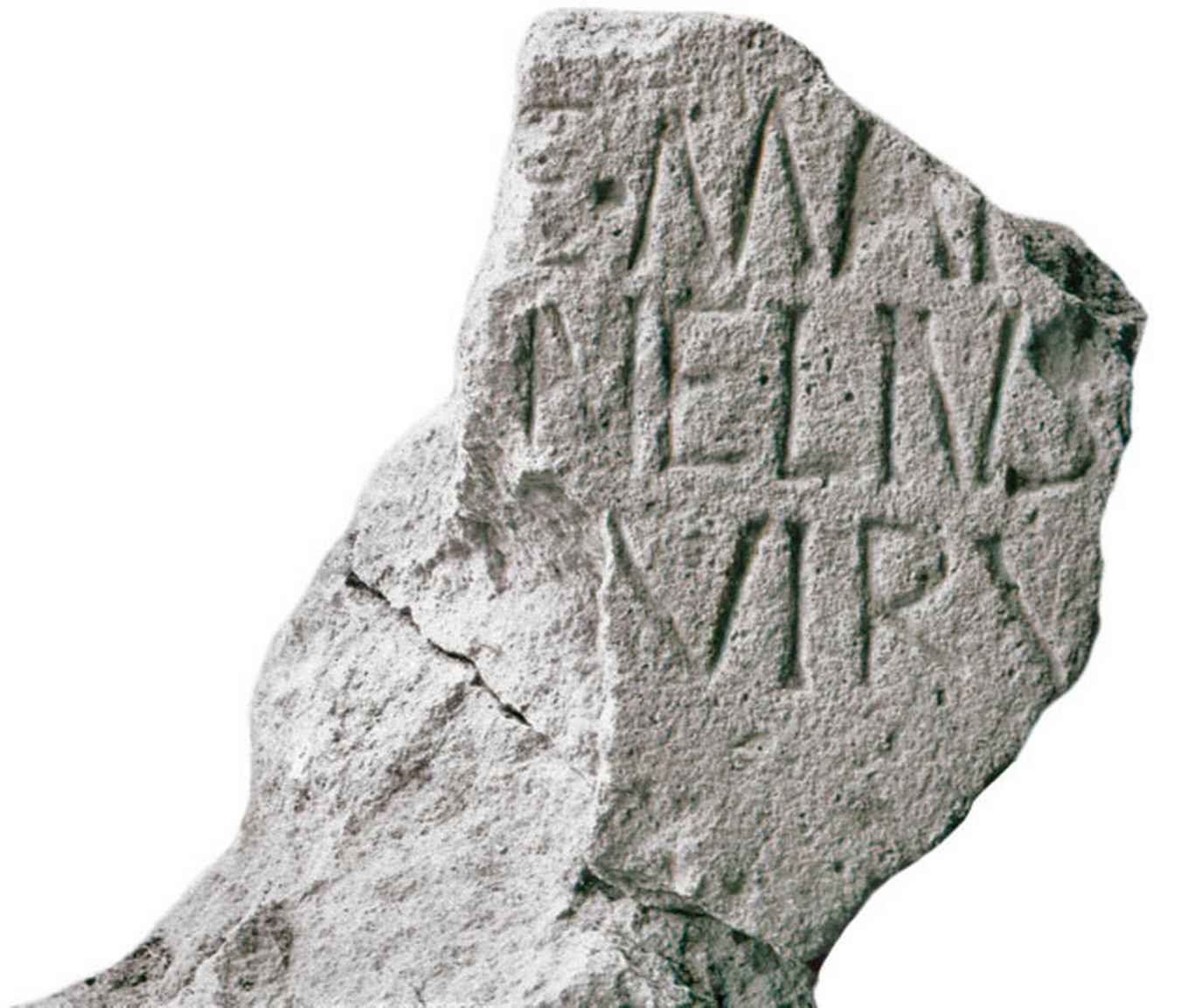Epigraphic finds
During the long period of archaeological research in Satricum several inscriptions have been discovered demonstrating a remarkable diversity in language and text. They offer an impressive image of the long and diverse history of the settlement from the 6th until the 3rd centuries BC.
Etruscan inscription
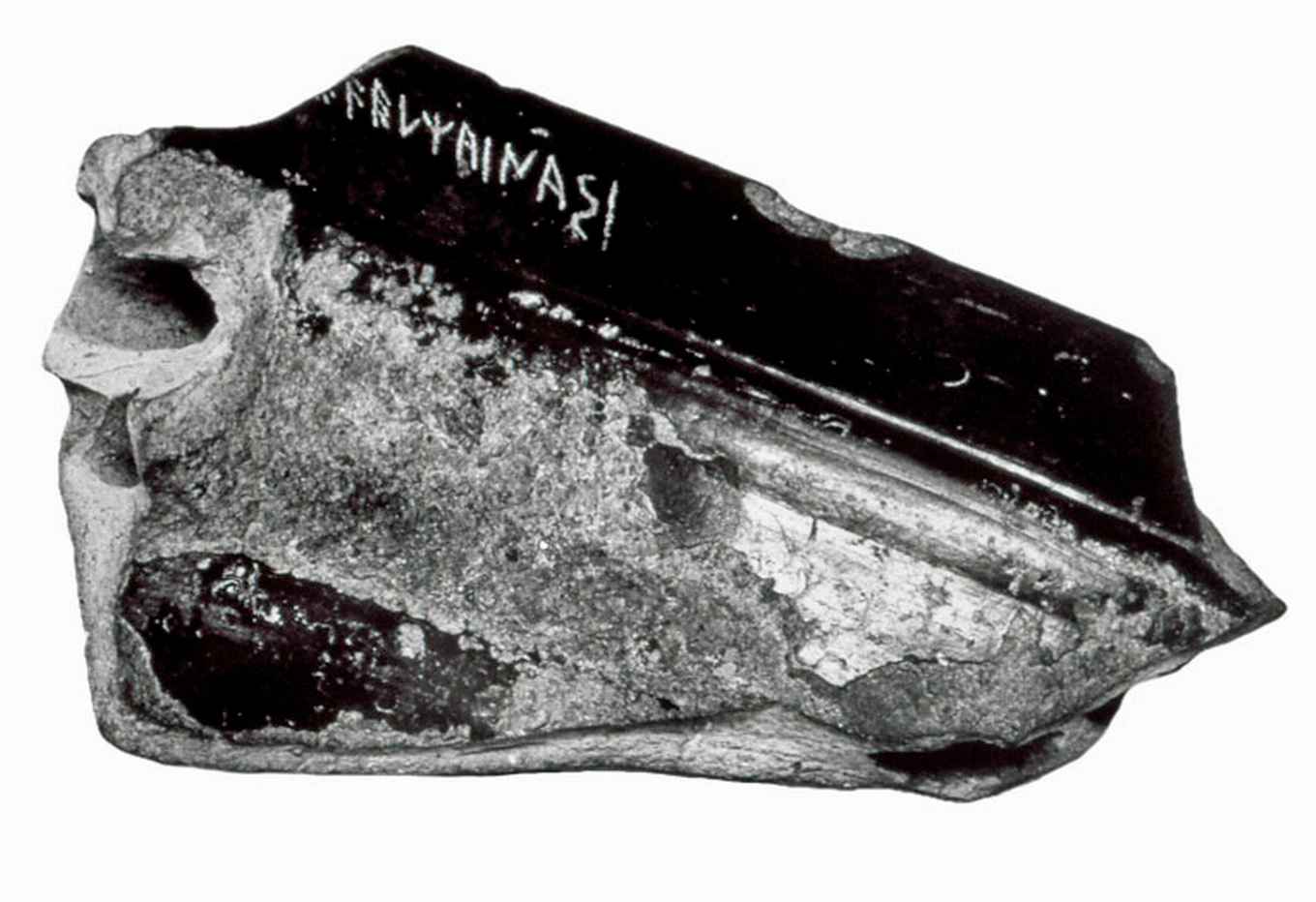
During a small dig in the 1950s a fragment of an exceptional bowl of bucchero-pottery was found near the temple complex on the acropolis. The inside of the rim of the bowl shows an almost complete Etruscan inscription recording the name of the person owner or dedicant of the bowl. The vase was probably made around 700 BC in the southern Etruscan town of Cerveteri.
Latin inscription
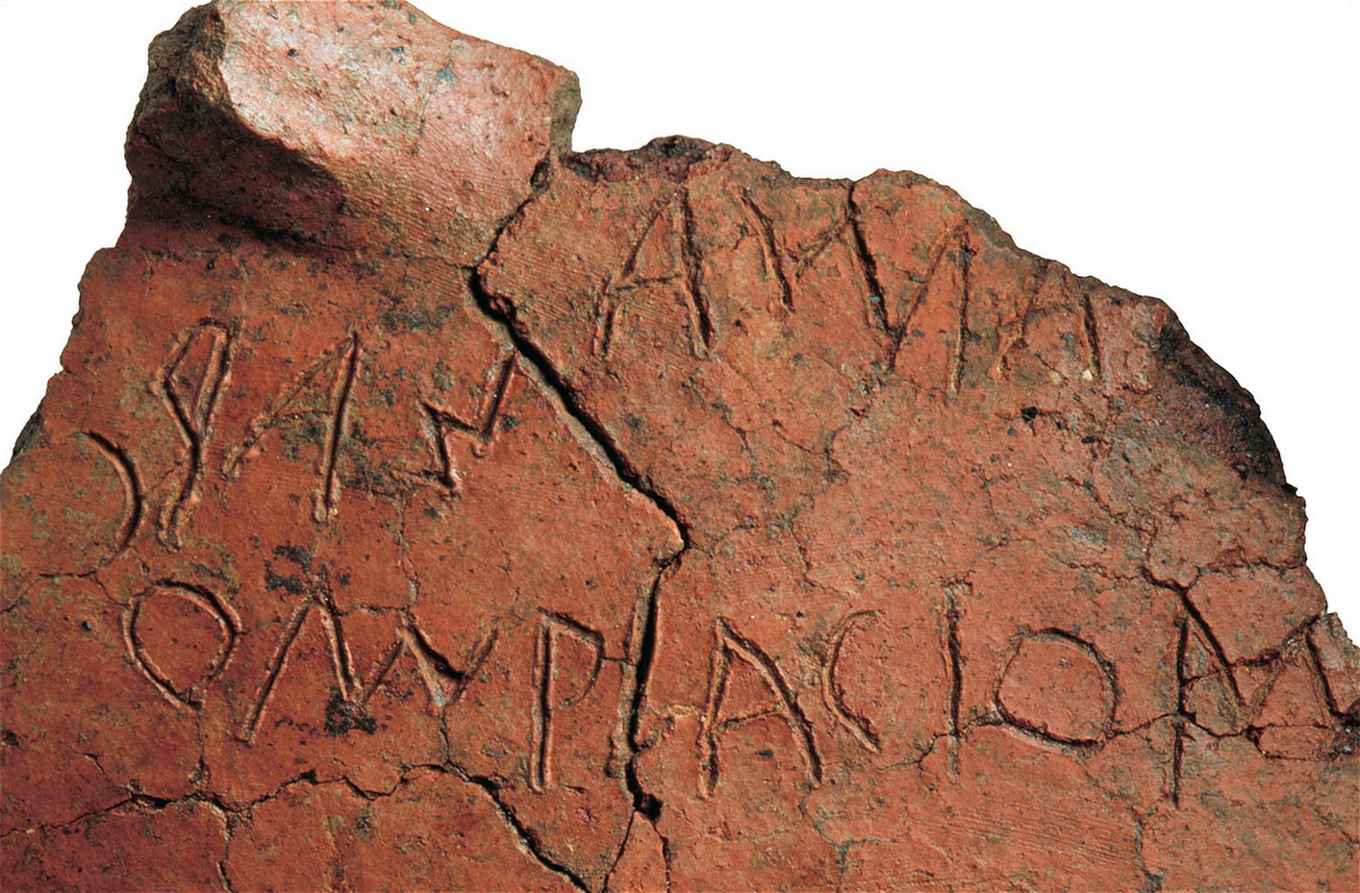
In a thick layer of roof tiles and pottery on the northeastern corner of the acropolis, three fragments of a storage vessel (dolium) were found in 2002 showing an Archaic Latin inscription. Its script is dated to the second or third quarters of the 6th century BC and as such one of the oldest inscriptions found in Satricum. The inscription contains a name of Etruscan or southern Greek origin.
Lapis Satricanus

The Lapis Satricanus is the oldest coherent public monumental Latin inscription in the world, dating from the last quarter of the 6th century BC. It was applied to a tuff stone basis reused as a building block in the foundation of the last temple of Mater Matuta. The text refers to a consecration and mentions the name of Publius Valerius Poplicola, possibly the same person known as one of the founders of the Roman Republic.
Volscan inscription
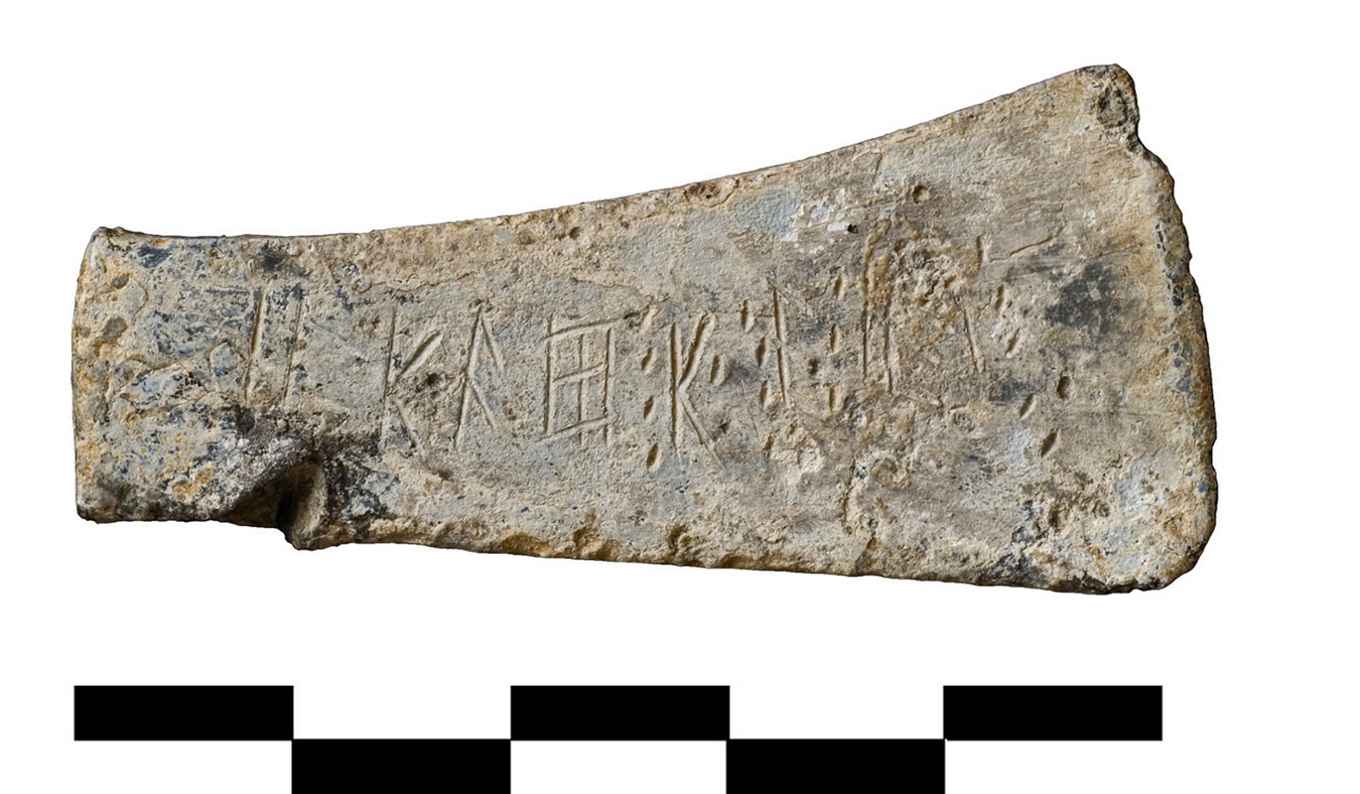
A Volscan inscription was found on a lead miniature axe buried as a gift in a child grave from the 5th century BC in the Southwest necropolis. The alphabet is unknown in Latium and the origin is probably to be sought in the Sabello-Faliscan area.
Greek inscription
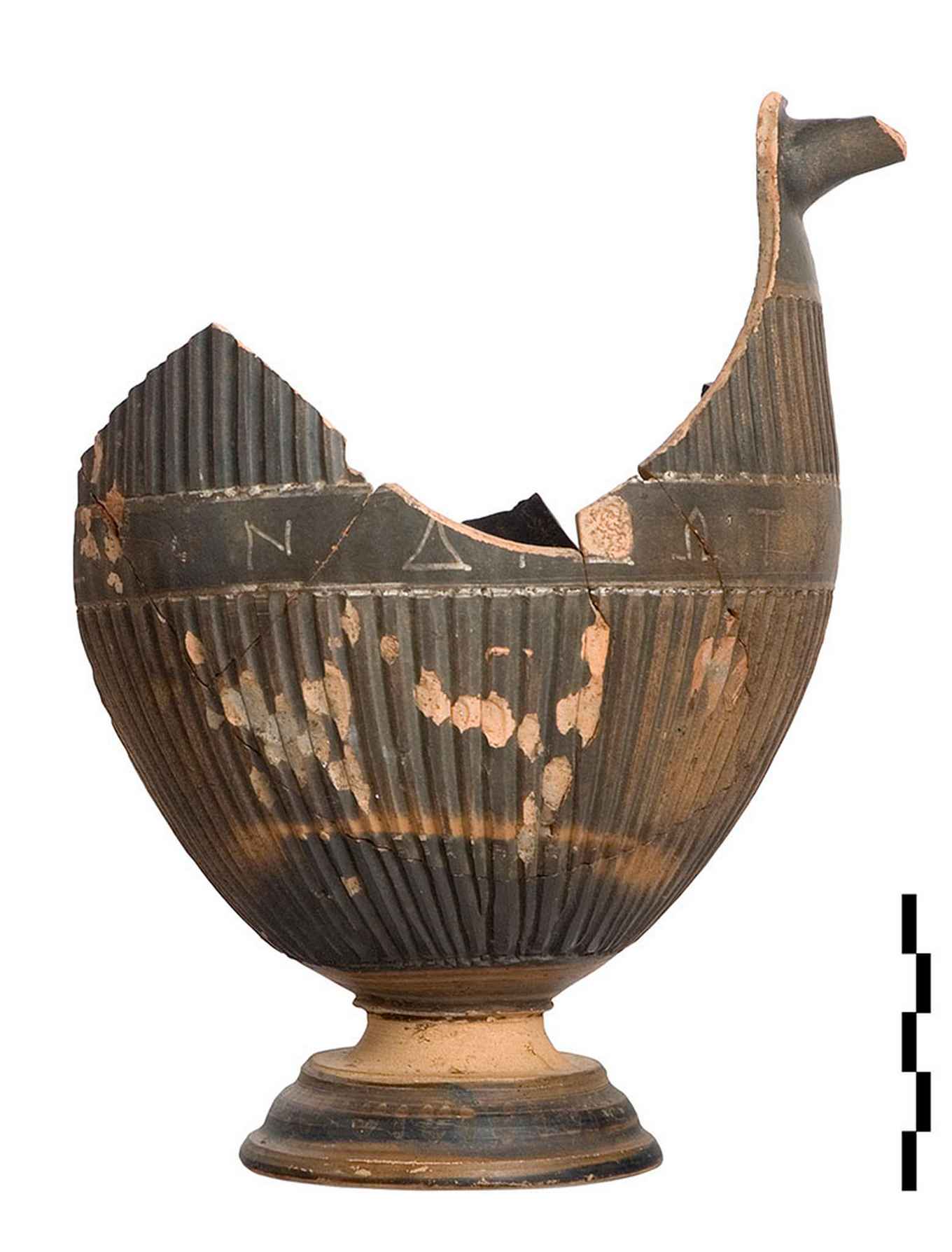
A dedication to Mater Matuta painted on a black glossed votive vase from the 3rd century BC. The vase was found in fragments dispersed in different layers of the Hellenistic Votive deposit and is not complete.
Roman inscription
